On Film
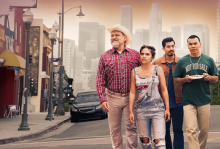
A GENUINE HEART can overcome many a fault in the television landscape. I don’t just mean from a plot perspective, in which a character’s good nature helps them exit a situation their good nature got them into in the first place. But also from the perspective of capturing viewers’ attention—protagonists whose warmth we feel through the screen in a way that makes us forget a show’s turnoffs: occasional weak jokes, predictable storytelling, trite dialogue—all of which the Netflix show Gentefied contains.
And yet Gentefied, a half-hour comedy with a title that plays on the words gente (Spanish for “people”) and gentrified, has quickly become a favorite. The Mexican American Morales family at its center are hilarious and relatable. Casimiro (or “Pop,” as his grandkids call him), owner of a taco restaurant in LA’s Boyle Heights neighborhood, struggles to keep his establishment open as he falls further behind on its rent and gentrification makes the neighborhood less and less familiar. Meanwhile, Casimiro’s granddaughter Ana seeks to become a successful artist; grandson Chris, a trained-in-Paris chef; and other-grandson Erik, a dependable dad. Haunting their family home are Chris’ financially stable yet estranged dad and memories of Pop’s late wife. In these tough situations full of grief (Donald Trump’s xenophobic presidency does not help), Gentefied’s creators Linda Yvette Chávez and Marvin Lemus highlight the humor and love of the Morales family journey.
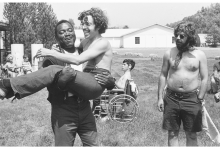
FOR A YEAR defined by isolation, 2020 has been fascinatingly full of stories about relationship. It feels oddly appropriate that during a time when we’re constantly confronting our divisions—ideological and physical—we’ve been surrounded by cinematic reminders of the importance of community and the various ways we find it. Films of 2020 have come out largely through streaming platforms, and we’ve watched them in our homes, by ourselves. They’ve still managed, however, to inspire connection.
Kirsten Johnson’s documentary Dick Johnson Is Dead chronicled her father’s dementia by celebrating her dad’s life, while Natalie Erika James’ horror film Relic addressed the real-life existential terror of watching a loved one’s mind fade to the same disease. Other films such as Spike Lee’s Da 5 Bloods and Sofia Coppola’s On the Rocks examined how adult children relate to their parents’ flaws. Of course, family doesn’t have to mean the people we share our genes with. Movies this year addressed found families too, from Crip Camp’s community of disability activists to The Old Guard’s fiercely devoted group of immortal warriors. Even popcorn fare such as Bill & Ted Face the Music celebrated the way long-standing bonds support us throughout our lives and help us in turn to love others.
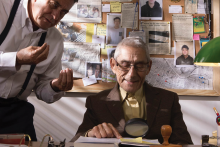
ONE OF THE MOST important things art—especially narrative art—can do is inspire us to show empathy for others by making us see the world through someone else’s eyes. Stories of kindness and compassion are stories of the gospel in action. Right now, in a time of extreme division, conflict, and isolation, we need stories that remind us what that looks and feels like, and the ways in which we can show it to others.
Chilean filmmaker Maite Alberdi’s documentary The Mole Agent is a heartwarming testament to this type of kindness. Alberdi’s film follows 83-year-old Sergio, hired by a private detective to go undercover at a nursing home and report on the treatment of its residents. Sergio’s loving interactions with everyone he meets and Alberdi’s observational filmmaking together provide an example of love through serving others.

THE HYMN “I Sing a Song of the Saints of God” is one of my favorites in the Episcopal tradition, usually sung on All Saints Day. It concludes with the line, “For the saints of God are just folk like me / And I mean to be one, too.” It’s a reminder of the people in our lives—living and otherwise—who are everyday saints, not canonized but important in our formation.
In Dick Johnson Is Dead, filmmaker Kirsten Johnson celebrates her father, one such everyday saint. Dick isn’t actually dead, but he has been diagnosed with Alzheimer’s. How much of his life remains isn’t certain, but Johnson is determined to show him just how well he’s loved by trying to rid him of some of his fear of death.
Johnson does this in a darkly funny way that’s true to her dad’s mischievous streak: She collaborates with him on a series of staged scenes depicting his death from a variety of accidents. Dick is crushed by an air conditioner, falls down stairs, is hit by a construction worker’s nail-filled board, and more. “Everyone dies,” Johnson reminds us, even the people we love the most.

MIDWAY THROUGH THE second half of Wim Wenders’ Until the End of the World, the movie’s narrator, Eugene (Sam Neill), plays music with a group of characters in an Australian village. Eugene is on piano, his friend David (David Gulpilil) plays the didgeridoo, a German private investigator (Rüdiger Vogler) wails on a harmonica, and a French bank robber (Chick Ortega) plays drums while they wait anxiously for news about the destruction of a nuclear satellite, which, we’re told, would bring about Armageddon.
Eugene reflects on the journey that’s led the group here and realizes this communal moment of joy in the face of fear is its apex. He calls it “a prayer for the wounded earth.” In many ways, this 1991 global sci-fi odyssey, recently released in a director’s cut by the Criterion Collection, feels like exactly that. It’s a prayer for not only its fictional future earth but the self-involved world we live in now, a world drunk on idealized images of ourselves.
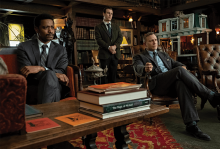
RIAN JOHNSON'S FILM Knives Out wastes no time setting up the murder mystery that powers its plot. In the very first scene, famed mystery writer Harlan Thrombey (Christopher Plummer) is found in the library of his mansion, his throat cut. Harlan’s family is shocked. His Latina caretaker, Marta (Ana de Armas), Harlan’s closest confidant, is devastated. The police think it’s a suicide. Private detective Benoit Blanc (Daniel Craig) thinks otherwise.
The mystery of Harlan’s death may be the plot of Knives Out, but as the story progresses, it’s clear that the film is actually about something else.
Bootstrapping—the idea that one can achieve success purely through hard work and determination—is touted in most areas of public life, from business to education to politics. White Americans particularly love to claim that we’ve risen from tough circumstances while making it harder for less-advantaged populations to do just that.
In Knives Out, the bootstrapping myth is everywhere. Harlan’s children are proud that their dad built a publishing empire. Harlan’s daughter Linda (Jamie Lee Curtis) tells Blanc that she, too, created her own business from the ground up. But, of course, those stories aren’t the whole truth. Linda would be nowhere without the hefty loan she got from her father. Harlan himself may have worked hard for his success, but as a white man, there’s no doubt his path was easier than it would have been for others.
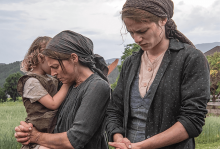
TERRENCE MALICK HAS long been associated with spirituality. The director’s philosophy background, poetic style, and love of nature results in art that urges viewers to engage deeply with the world: Ask difficult questions, doubt, and believe.
But A Hidden Life, Malick’s latest, may be the most faith-oriented film yet from the director of The Tree of Life and The Thin Red Line. Through the story of World War II-era martyr Franz Jägerstätter, Malick explores what it means to wrestle with Christian conscience during rising xenophobia and violence. Jägerstätter (played by August Diehl) was an Austrian farmer executed for refusing to swear loyalty to Hitler. For Malick’s purposes, he becomes an audience surrogate as he encounters his community’s reactions to the Third Reich, and later a Christ figure.
Malick spends significant time establishing the beauty of Jägerstätter’s life before the war. We’re given glimpses of his village and farm, witness romantic moments with his wife, Franziska (Valerie Pachner), and fall in love with them and their home.
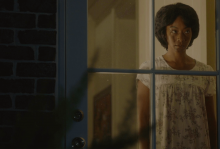
“I love the truth I find in dark films.”
In a 2003 speech titled “A Filmmaker’s Progress,” Sinister and Doctor Strange filmmaker Scott Derrickson, a Christian, made this statement in reference to spiritual and moral themes in his work. It’s an interesting idea to consider, not only because tales of terror get more popular this time of year, but also because Derrickson does most of his work in horror, a genre that doesn’t often get positive associations with faith.
Horror is typically considered exploitative, good for nothing more than the basest forms of gratuitousness that cinema can offer. But in fact horror is a smarter, more diverse genre than it’s given credit for. It is one of the best cinematic vehicles for social commentary.
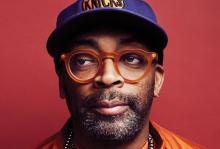
“Always do the right thing.”
“That’s it?”
“That’s it.”
“I got it. I’m gone.”
DA MAYOR (Ossie Davis) and Mookie (Spike Lee) share this exchange in Lee’s film Do the Right Thing, which turns 30 this summer. Three decades on, Lee’s masterpiece on racism and community still stands out for its trailblazing voice. Lee, and the film that blasted him into broad public consciousness, continue to inspire powerful work by filmmakers of color, including Dear White People, Get Out, and The Hate U Give.
It’s undeniable that Do the Right Thing’s bold style and perspective are what helped it become iconic. Its depiction of the police killing of black men also remains powerful and, as it turned out, prescient. The film almost seems to have predicted events that unfolded 25 years later following the deaths of Michael Brown, Eric Garner, and so many others.
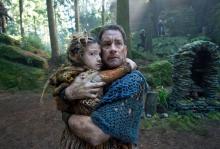
WHEN I STARTED writing this column a decade ago, the Oscars were about to address The Dark Knight not being nominated for Best Picture by expanding from five to 10 possible nominees. Only two Marvel Universe movies had been released, iPads didn’t exist, movies were still mostly shot on film, and #MeToo wasn’t known outside activist circles.
Today, as I write my final regular column for the magazine, the expanded nominations system has delivered one of the least plausible Best Picture awards in memory (Green Book), 22 Marvel movies have been released, people make films on iPads, watching cinema on a phone is second nature, and a new era of respect and accountability is dawning in the entertainment industry and elsewhere.

SOMETHING WONDERFUL is happening in popular cinema: a new psychological depth married to kinetic technique that seems to emerge from filmmakers’ willingness to show their vulnerability. Notice how First Man is far more than a moon landing epic; it’s massively about the heart. Blindspotting takes racism more seriously than it takes itself. And Leave No Trace doesn’t settle for catharsis but invites us to do something in response to the brokenness on screen. There are dozens more films like this.
The psychological depth and open vulnerability of these films are mirrored in the way we talk about movies. It’s easy to find good film criticism that tells us about the writer’s life, and conversation about how cinema interacts with the world is no longer exclusively an elitist game.
But our favorite films don’t just tell us what we think about the world: They tell us something about what we think of ourselves. If what we pay attention to shows us what we love, it may also show us what we allow to love us. It bears exploration: What do our favorite films say about who we are, who we want to be, how we see the world, and what we feel we deserve? What are they inviting us to become?

THERE ARE moments in The King—Eugene Jarecki’s ambitious movie about how the rise and decline of Elvis Presley is a metaphor for America—when the film feels like a prophetic lament. Striking widescreen photography frames an original idea: taking the Rolls Royce that Elvis owned on a nationwide road trip, picking up hitchhikers and celebrities alike to talk about what went wrong.
Parts of it are brilliant: Chuck D lamenting how Elvis appropriated black music and ended up being coronated while “Big Mama” Thornton (for whom Leiber and Stoller wrote “Hound Dog”) remained a marginal figure; John Hiatt gently weeping in the back of the Rolls, his heart heavy at how Elvis “was so trapped”; the housekeeper who found Elvis half-dead on the toilet, and the women who live in one of his early homes, briefly centering the stark contrast between a 20th-century king and 21st-century poverty.
It’s brave and imaginative to include footage of Jarecki’s interviewees criticizing him and the film itself. The Wire creator David Simon says it would have been better to use one of Elvis’ Cadillacs—a more apt metaphor for American decline than the car of a British aristocrat. More challenging is Van Jones asking why Jarecki seems to defend a man who took the music of descendants of enslaved people, accrued enormous power for himself, and didn’t speak up when the nation needed public figures to support civil rights.

WILLEM DAFOE is my favorite onscreen Jesus, and since The Last Temptation of Christ’s release three decades ago, he’s been indelibly associated with that role. His Jesus was a corrective to the over-mysticized versions in epics such as Ben-Hur and The Greatest Story Ever Told, which portray Jesus as a kind of magician instead of a person.
Dafoe’s Jesus (which is also the Jesus of novelist Nikos Kazantzakis and Paul Schrader, who adapted Kazantzakis’ work for the screen) is a serious attempt at grappling with the human questions his story demands. This Jesus is a breathing, sweating, sleeping, dancing, agonizing, raging Jesus: a political Jesus who prefers a donkey to a revolution; a compassionate Jesus who struggles to figure out his own needs amid the burdens of the world; a thinking Jesus who doesn’t emerge from the womb with a fully formed philosophy but learns by experience, scripture, and prayer.
Fictionalized Jesuses are, of course, like any other Jesus: We see all the Jesuses we’ve ever met through the lens of our own experience. The light of Willem Dafoe’s Jesus (not to mention his astonishing portrayal of Vincent van Gogh in the recent masterpiece At Eternity’s Gate) is more useful to me than the “magician” versions because I’m not sure I can learn much from superheroes.

BEFORE WE GET to the best movies of 2018, let’s talk about the most memorable moments of this year in cinema. Neil Armstrong casting his daughter’s bracelet into a canyon on the moon in First Man, a story as much about one person’s grief and desire to connect with another as about our species’ ambition and desire to conquer the final frontier.
The dawning realization, in What They Had, of why Robert Forster steps out of the bedroom he has shared with Blythe Danner for 60 years, sparing her more suffering and loving her until the end.
A deceptively simple scene—a conversation in a car going from one neighborhood to another—that’s a revelation of social inequality and how near yet far we live from each other. In minutes, Widows covers centuries of relationships of power.
An unexpected funeral in The Gospel of Eureka that breaks the audience’s heart and calls forth our loves.
And the titular character Christopher Robin, who holds Pooh Bear’s hand as they walk through a field, as though Terrence Malick is directing the film.

WHEN A FILM seems ahead of its time, it’s because its artists are like time travelers, bringing information from the future to illuminate our present. Ideas that lack mainstream consensus (for instance, restorative justice, gift economies, and the flourishing of previously silenced voices in central leadership roles) can manifest in filmmakers’ storytelling as though they are already reality. We leave the theater wishing the world was more like what we were shown. In the future, we may watch the same film and remember how strange it was when the world was different.
Two recent movies that are this kind of prophetic couldn’t be more different from each other in tone but have the same intent: to say something truthful about women who suffer.
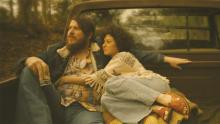
IN THE FILM BLAZE, directed by actor Ethan Hawke, happiness is rare and meaning always seems slightly out of reach, just around the corner. An unconventional, compelling biopic of Blaze Foley, a country musician who died too young, and violently, Blaze is a challenging alternative to familiar rags-to-riches tales. It’s rags-to-slightly-more-fashionable-rags, where the loneliness of the road is never salved by the acclaim of a crowd, the price of art being the very life of the artist.
As a movie about the pain of making music, it’s up there with Tender Mercies, Coal Miner’s Daughter, and Dreamgirls. As a biopic it gets closer to the inner life of its subject than most—Ben Dickey’s hypnotic lead performance embodies the drive to write, to sing, to perform, even if no one’s watching. “He knew the value of zero,” says iconic songwriter Townes van Zandt in the film. Van Zandt is played by Charlie Sexton, one of van Zandt’s cultural heirs and a frequent member of Bob Dylan’s band. The value of zero here is the notion that what we’re most called to in life is authenticity, whatever the reward.

A TRAUMATIZED Iraq War veteran and Oscar Wilde don’t immediately invite comparison, but in two current films they could be scapegoated brothers. The Happy Prince, a labor of love for its writer-director-star Rupert Everett, and Leave No Trace, director and co-writer Debra Granik’s first fiction feature since Winter’s Bone, are both about men in a wilderness, not because they have done anything wrong but because the dominant culture doesn’t want to see them. And I mean truly see them—especially the way they may remind us of discomfort with ourselves.
In Leave No Trace, Ben Foster’s Will has given mind and body for his country and wants to live where he feels safest—in the woods. He handles himself and keeps his daughter (the brilliant Thomasin McKenzie) physically safe, emotionally healthy, and growing in knowledge of the world, but because he doesn’t care for the “system” that harmed him, he must hide or jump through hoops to prove he’s as good as anyone else.
Everett’s Oscar Wilde, in The Happy Prince, is trying to make a life after being imprisoned for love. The first prison was the love itself, love made torment by bigotry; the second a literal jail. He’s broke and broken. He doesn’t always treat others well, but aches to grant the world what he can: amusement at ourselves mingled with compassion for those living “in the gutter,” whether or not they can see the stars. These beautiful films offer hope without cliché, recognizing that our experience of tragedy always coexists with love.

THERE’S A bluish light on the beach in The Piano, Jane Campion’s 1993 film about a woman mute by trauma-induced choice, sold from Scotland into an unwanted marriage in New Zealand, who deepens the roots of her soul and expands her reach into the air and the people around her. The same light is in the misty forest where her confused patron and eventual lover lives; but in her husband’s home, it is dark.
I remembered The Piano as an unusual Victorian romance, but watching it recently, in a restored version that accentuates the exquisite strangeness of its images and ideas, opened a forgotten room in my mind. The Piano functions as a love story that could happen “here”—a character liberates herself from oppression, claims her space in the world, and learns to love herself. But it also deals with mythic reality. Love, hate, power, healing, purpose, Being itself. Things I had not noticed the first time.
It’s often this way when we watch films from the past—we remember who we were, which of course is only ever who we thought ourselves to be; we compare with who we think ourselves to be now. A dialogue ensues between the younger and older selves. A movie that we then experienced as a masterpiece now seems clichéd, or one we did not “get” the first time around now manifests as the film we’ve been waiting for all our lives. We weren’t ready before. Sometimes what we need most is to be reminded that the wonder we used to experience might be even more true than the skepticism that now burdens us.

LIFELONG FRIENDSHIP is paradoxical. The person who knows you best can also cause the most pain. Another layer of complexity emerges when one party wants to change their life while the other remains fixed on how things used to be. Spend an evening with high school buddies who haven’t seen each other for 20 years, and you’ll see that unresolved parts of our character tend to appear when old friendships spark off each other.
The utterly thrilling Blindspotting, a likely candidate for both the best and most important film of the year, dramatizes friendship as central to being human, with the unresolved dimensions of wider social relationships the main challenge we face to be happy in this life and to have a life at all. It’s a brilliant examination of one of the smallest facts of life—boy meets boy—and one of the largest: Since your people persecuted my people, how can we ever become the same people?
The plot is simple: A guy has three days before his probation ends, so he must avoid even the hint of trouble. It doesn’t work out, of course.

THE NEW DOCUMENTARY about the life of beloved children’s television host Fred Rogers, Won’t You Be My Neighbor?, is not merely a nostalgia trip. It stirs more than fond memories: a collective hope that we might discover our kinder selves. Fred Rogers made kindness look easy.
Some folks are skeptical—they remember Mister Rogers as nice, but not brilliant, sweet, but not powerful. Directed by Morgan Neville, Won’t You Be My Neighbor? reveals Fred Rogers as an activist for the common good—a singular figure who cared enough about people to give them what they needed, even if they didn’t know to want it. Footage from 1969 of Rogers testifying to a U.S. Senate subcommittee poised to reduce public television funding—melting the heart of a previously resistant senator—isn’t just a heartstring-pulling moment of grace but shows how speaking truth to the powers can sometimes convert them.